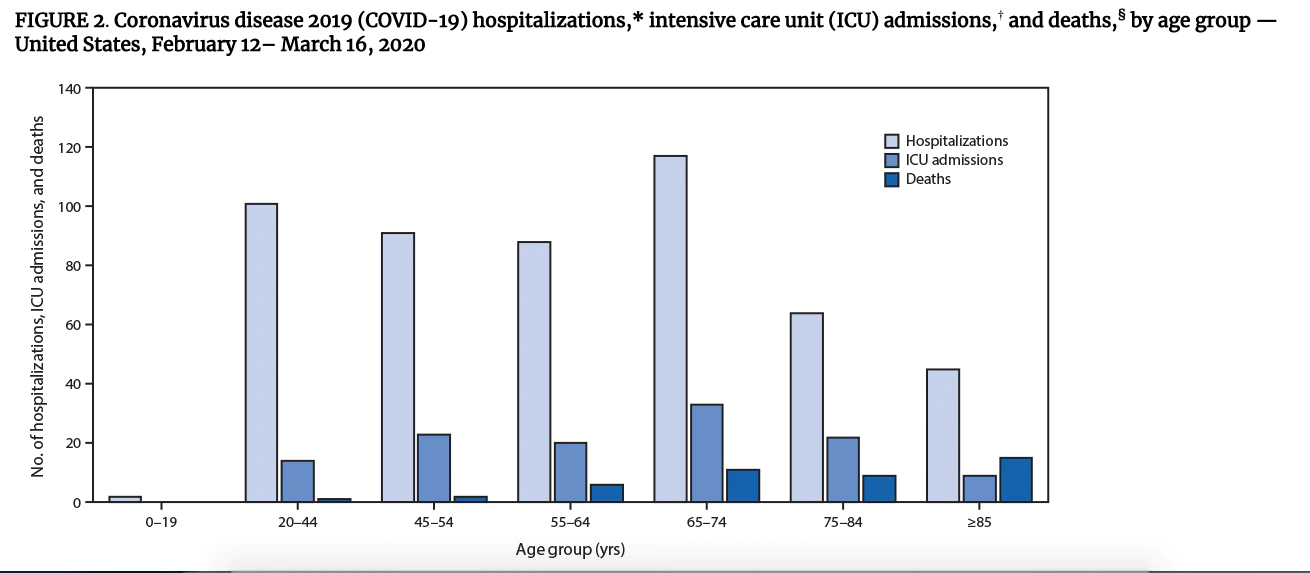CDC: Younger Adults Are Large Percentage Of Coronavirus Hospitalizations In U. S.
The deadly coronavirus has been met with a bit of a shrug among some in the under-50 set in the United States (U.S.). Even as public health officials repeatedly urged social distancing, the young and hip spilled out of bars on Bourbon Street in New Orleans. They gleefully hopped on flights, tweeting about the rock-bottom airfares. And they gathered in packs on beaches.
Their attitudes were based in part on early data from China, which suggested COVID-19 might seriously sicken or kill the elderly — but spare the young.
Stark new data from the United States and Europe suggests otherwise.
A Centers for Disease Control and Prevention analysis of U.S. cases from Feb. 12 to March 16 released Wednesday (March 18) shows 38 percent of those sick enough to be hospitalized were younger than 55.

Earlier this week, French health ministry official Jérome Salomon said half of the 300 to 400 coronavirus patients treated in intensive care units in Paris were younger than 65, and, according to numbers presented at a seminar of intensive care specialists, half the ICU patients in the Netherlands were younger than 50.
At a White House news conference on Wednesday, Deborah Birx, the response coordinator of the nation’s coronavirus task force, warned about the concerning reports from France — and Italy, too — about “young people getting seriously ill and very seriously ill in the ICUs.”
She called out younger generations in particular, for not taking the virus seriously, and warned of “disproportional number of infections among that group.”
President Trump reinforced her warning, saying: “We don’t want them gathering, and I see they do gather, including on beaches and in restaurants, young people. They don’t realize, and they’re feeling invincible.”
The CDC report looked at 4,226 COVID-19 cases, with much of the data coming from the outbreaks among older adults in assisted living facilities. As in China, the highest percentage of severe outcomes were among the elderly. About 80 percent of people who died were older than 65.
However, the percentage with more moderate or severe disease requiring hospitalization is more evenly distributed between the old and the young, with 53 percent of those in ICUs and 45 percent of those hospitalized age 65 and older.
“These preliminary data also demonstrate that severe illness leading to hospitalization, including ICU admission and death, can occur in adults of any age with COVID-19,” researchers wrote.
There was more encouraging news about children in the U. S. Those ages 19 and younger who were tested appear to have a milder illness with almost no hospitalizations. A much larger sample of children in China, as detailed in the journal Pediatrics this week, found that most children had mild to moderate illness.
The CDC report did not specify whether the younger patients had underlying conditions that might make them more vulnerable, but Anthony S. Fauci, the head of the National Institute of Allergy and Infectious Diseases, commented on CNN on Wednesday night that some did.
One younger adult, Clement Chow, a genetics researcher at the University of Utah, has been tweeting about his experiences. “Important point: we really don’t know much about his virus. I’m young and not high risk, yet I am in the ICU with a very severe case,” he wrote. He said he was facing respiratory failure and put on oxygen.
Public health in U. S. experts say it’s difficult to compare coronavirus numbers by age across countries at this stage because of the limited numbers tested and because differences may be related to the environment, lifestyle, demographics or something about the virus itself.
Adolfo Garcia-Sastre, the director of the Global Health and Emerging Pathogens Institute at the Icahn School of Medicine at Mount Sinai in New York City, said the numbers are difficult to interpret because so few people have been tested. He said some populations may be overrepresented because of public health officials focusing on testing clusters of people who live together and may be of similar ages.
However, Garcia-Sastre said, the numbers show it’s clear “everybody has risk. Even in young people, there is a percentage that has serious infection.”
ICYMI: Top 11 Misconceptions Many African Americans Have About Coronavirus


